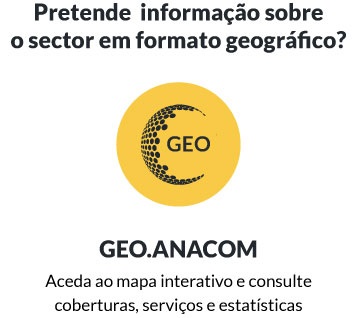Ackerberg et al (2009). “Low-income demand for local telephone service: the effects of lifeline and linkup”. SIEPR policy paper No. 08-047. Disponível em Low-Income Demand for Local Telephone Service: Effects of Lifeline and Linkuphttp://siepr.stanford.edu/publicationsprofile/2013.
Briglauer, Wolfgang et al (2011). “Is Fixed-Mobile Substitution strong enough to de-regulate Fixed Voice Telephony? Evidence from the Austrian Markets”. Journal of Regulatory Economics, Vol. 39, Nº1, pp. 50-67.
Casler, Stephen D. (2011). “Coefficient change, price effects and implict elasticities: Estimating microeconomic determinants over two time periods”. Economic Systems Research, Vol. 23, Nº2 , pp. 153-174.
Dash, Ashish; Kumar, Sukesh (2011). “Understanding Users of Mobile Services in Rural Area: A Case of Bishalkhinda Village in Odisha”. IUP Journal of Marketing Management, Vol. 10, Nº 2, pp. 54-63.
Faruqui, Ahmad; Sergici, Sanem (2011). “Dynamic pricing of electricity in the mid-Atlantic region: econometric results from the Baltimore gas and electric company experiment”. Journal of Regulatory Economics, Vol. 40, Nº 1, pp. 82-109.
Garbacz, C (1997). “Assessing the impact of FCC lifeline and link-up programs on telephone penetration”. Journal of Regulatory Economics, Volume 11, Nº 1, pp 67-78, Jan 1997.
Gyimah-Brempong, Kwabena; Karikari, John Agyei (2007). “Telephone Demand and Economic Growth in Africahttp://www.unidep.org/Release3/Conferences/Afea_2007/IDEP-AFEA-07-11.pdf”. Disponível em Telephone Demand and Economic Growth in Africa.
ICP-ANACOM (2011a). “ Decisão Relativa à Metodologia a Aplicar no Cálculo dos Custos Líquidos do Serviço Universal de Comunicações Eletrónicas”.
ICP-ANACOM (2011b). “Relatório de Audiência Prévia e Consulta Pública aos SPD Relativos ao Conceito de Encargo Excessivo e à Metodologia a Aplicar no Cálculo dos Custos Líquidos do Serviço Universal de Comunicações Eletrónicashttps://www.anacom.pt/render.jsp?categoryId=341786”.
ICP-ANACOM (2011c). “Decisão Relativa ao Conceito de Encargo Excessivo”. Disponível em Consulta sobre a definição de encargo excessivo e cálculo dos custos líquidos do serviço universalhttps://www.anacom.pt/render.jsp?contentId=1068154.
Inglesi-Lotz, R. (2011). “The evolution of price elasticity of electricity demand in South Africa: A Kalman filter application”. Energy Policy, Vol. 39, pp. 3690–3696.
Inglesi, Roula (2010). “Aggregate electricity demand in South Africa: Conditional forecasts to 2030”. Applied Energy, Vol. 87, pp. 197–204.
ISEGI-UNL (2011). Divulgação de Resultados – ECSI 2010: Banca, Seguros, Comunicações, Gás em Garrafa, Gás Natural, Transportes de Passageiros e Águas.
ISEGI-UNL (2010). Relatório A Satisfação do Cliente no Sector das Comunicações – Ano 2009. Disponível em ECSI Portugal - divulgados resultados de 2009https://www.anacom.pt/render.jsp?contentId=1036438.
ISEGI-UNL (2009). Índice Nacional de Satisfação do Cliente – Relatório ICP-ANACOM Comunicações. Disponível em Índice Nacional de Satisfação do Cliente (ECSI-Portugal) 2008 - sector das comunicações.
Karacuka, Mehmet; Haucap, Justus; Heimeshoff, Ulrich (2011). “Competition in Turkish mobile telecommunications markets: Price elasticities and network substitution”. Telecommunications Policy, Vol. 35, Nº 2, pp. 202-210.
Manfrim, Gustavo; Da Silva, Sergio (2007). “Estimating demand elasticities of fixed telephony in Brazil”. Economics Bulletin, Vol. 12, Nº 5 pp. 1-9.
Marshall, Alfred (1890). Principles of Economics. London, Macmillan and Co, Ltd, ed. 1920.
Mauleón, Iñaki (1991), “La Demanda de Teléfonos en Espana”. Investigaciones Económicas (Segunda época), Vol. XV, Nº 2, pp. 383-427. Disponível em La demanda de teléfonos en Españahttp://ideas.repec.org/a/iec/inveco/v15y1991i2p383-427.html.
Michinaka, Tetsuya; Tachibana, Satoshi; Turner, James A. (2011). “Estimating price and income elasticities of demand for forest products: Cluster analysis used as a tool in grouping”. Forest Policy & Economics, Vol. 13, Nº 6, pp. 435-445.
Moghaddam, M. Parsa; Abdollahi A.; Rashidinejad, M. (2011). “Flexible demand response programs modeling in competitive electricity markets”, Applied Energy, Vol. 88, Nº9, pp. 3257-3269.
Neelakanta, Perambur S.; Sardenberg, Renata C. Tourinho (2011). “Consumer benefit versus price elasticity of demand: a nonlinear complex system model of pricing internet services on QoS-centric architecturehttp://www.springerlink.com/content/k42732451r106460/”.
Ramos, Boris; Saeed, Khalid; Pavlov, Oleg (2010). ”The impact of Universal Service Obligations and International Cross-subsidies on the dispersion of telephone services in developing countries”, Socio-Economic Planning Sciences, Vol. 44, pp. 57–72.
Vodafone (2003). Review of price elasticities of demand for fixed line and mobile telecommunication services. Disponível em 2001-2002 TSO Determinationhttp://www.comcom.govt.nz/2001-2002tsodetermination/.
Ward, Michael R.; Woroch Glenn A. (2010). “The effect of prices on fixed and mobile telephone penetration: Using price subsidies as natural experiments”. Information Economics and Policy, Vol. 22, Nº 1, pp. 18–32.
Wheatley, Jeffery J. (2006). “Price Elasticities for Telecommunications Services with Reference to Developing Countries”, Media@LSE, London School of Economics and Political Science, London, Great-Britain.




